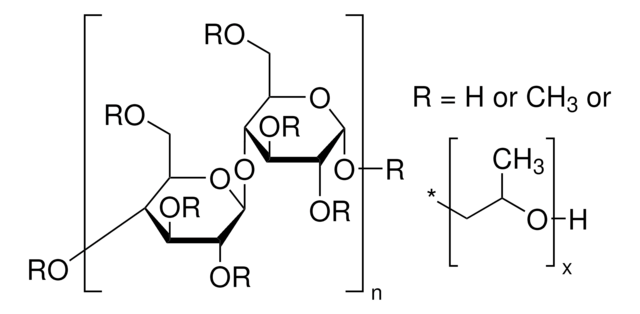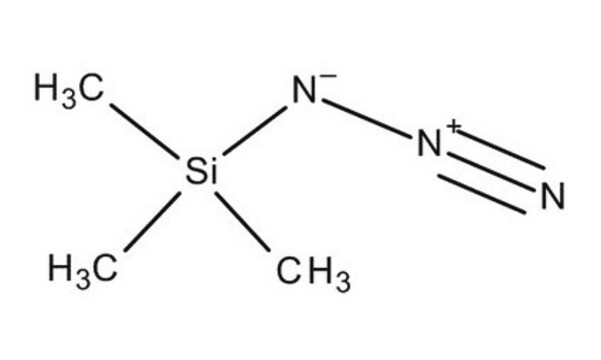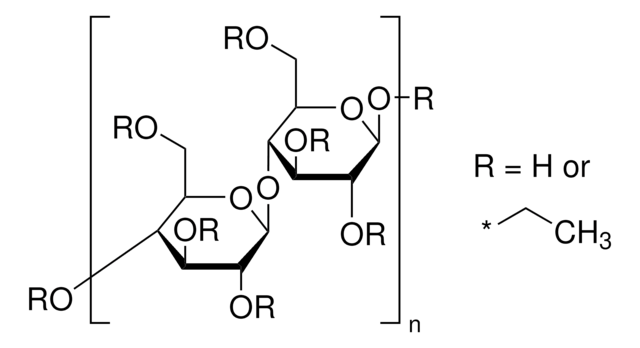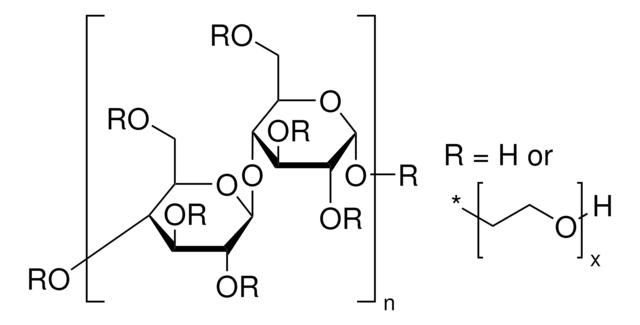Kluczowe dokumenty
191892
Hydroxypropyl cellulose
average Mw ~370,000, powder, 20 mesh particle size (99% through)
Synonim(y):
HPC
About This Item
Polecane produkty
opis
biological oxygen demand (BOD) 14,000 ppm
Poziom jakości
Formularz
powder
temp. samozapłonu
752 °F
masa cząsteczkowa
average Mw ~370,000
zanieczyszczenia
<5 wt. %
wielkość cząstki
20 mesh (99% through)
pH
5.0-8.5
olej mineralny do napięć międzyfazowych
12.5 dyn/cm, 0.1 wt. % in H2O (vs. mineral oil)
lepkość
150-400 cP, 2 wt. % in H2O(25 °C, Brookfield, spindle #2) (60 rpm)(lit.)
rozpuszczalność
H2O: insoluble (above 45 °C)
polar organic solvents: soluble
gęstość
0.5 g/mL at 25 °C (lit.)
ciąg SMILES
N(C)(C)c1cc(c(cc1)C(N)CC)C
InChI
1S/C12H20N2/c1-5-12(13)11-7-6-10(14(3)4)8-9(11)2/h6-8,12H,5,13H2,1-4H3
Klucz InChI
RRHXDYJWVYFMKV-UHFFFAOYSA-N
Szukasz podobnych produktów? Odwiedź Przewodnik dotyczący porównywania produktów
Powiązane kategorie
Opis ogólny
Zastosowanie
Kod klasy składowania
11 - Combustible Solids
Klasa zagrożenia wodnego (WGK)
WGK 1
Temperatura zapłonu (°F)
Not applicable
Temperatura zapłonu (°C)
Not applicable
Środki ochrony indywidualnej
Eyeshields, Gloves, type N95 (US)
Wybierz jedną z najnowszych wersji:
Masz już ten produkt?
Dokumenty związane z niedawno zakupionymi produktami zostały zamieszczone w Bibliotece dokumentów.
Klienci oglądali również te produkty
Nasz zespół naukowców ma doświadczenie we wszystkich obszarach badań, w tym w naukach przyrodniczych, materiałoznawstwie, syntezie chemicznej, chromatografii, analityce i wielu innych dziedzinach.
Skontaktuj się z zespołem ds. pomocy technicznej






